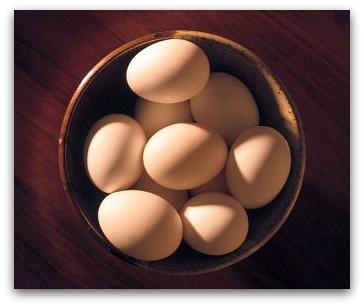Animals, too, suffer from Wind Turbine Syndrome
Aug 22, 2011
“Chickens near wind farms may provide early clues to potential harm to health of humans and animals”
—Miriam Raftery, East County Magazine (8/21/11)
Like those proverbial canaries in the coal mine, chickens near wind farms may provide early clues to potential harm to health of humans and animals. That’s the contention of Hamish Cumming, a farmer battling proposed wind turbines near his home in New Zealand.
He has written a letter to East County Magazine seeking help from people living near wind farms locally (and in other locations) to document cases of shell-less eggs, dead chickens, or other animals that suffer internal hemmorrhaging.
The “humble chicken” is common in rural areas near wind farms and can be easily monitored, Cumming says. Chickens under stress may produce a soft-shelled or shell-less egg that can’t be laid, killing the chicken. Such incidents have been documented near wind farms, says Cumming, who has also collected examples of livestock and a dog that died from internal hemorrhaging near wind farms.
“There are reports from many wind farm locations that chickens within a 3 km distance from turbines exhibit shell-less eggs during some weather conditions,” he stated. “Some locations have reported shell-less eggs or dead chickens that coincide with residents’ complaints about “noisy nights” from turbines.”
In fact, shell-less eggs are also known as “wind eggs.” According to Broad Leys Publishing, which specializes in books for poultry owners, a yolk-less wind egg may occur in a young pullet, but “wind eggs can also occur in older hens if they are subject to sudden shock.”
Chickens aren’t the only species suffering ill health effects from living near wind farms, Hamish says. (See this and this and this and this and this and this and this and this and this and this—Editor.)
“So far there are several records of dairy cattle in Canada and Australia reducing milk output by as much as 30%,” he wrote.
The Discovery Channel ran a report on massive deaths among bats that suffered lung hemorrhaging when flying near wind turbines.
Goats in Taiwan, verified by the Taiwanese Department of Agriculture, have reportedly died due to stress-induced conditions within 2 km of turbines. “I have had reports of high levels of stillborn lambs and calves (up to 10%) . . . and stillborn horses in Australia and overseas, only after wind farms commenced operations,” he claims.
Wind farms may even be damaging to the family pet, he believes. “A dog was verified by Werribee Veterinary Hospital as dying from multiple organ fibrosis, believed to be stress-induced—and it was also within 2 km of turbines.”
Animals grazing near wind farms have also exhibited fibrosis, or hemorrhaging of major organs, when butchered, he observed. He believes this may explain why some native birds abandon habitat and cease breeding close to wind turbines.
That’s of serious concern to Cumming, who has endangered bird species nesting on wetlands at his New Zealand farm.
There have also been claims around the world of human health impacts in some communities near wind farms. Dr. Nina Pierpont, a Johns Hopkins University School of Medicine-trained physician and Princeton University PhD, has authored a book titled Wind Turbine Syndrome documenting serious health effects in people living near wind turbines due to low-frequency sound waves. The wind industry has disputed her findings.
Cumming seeks residents in East County and elsewhere around the world who live within 5 km of wind turbines to create a large data pool. Participants may already own chickens, or be willing to acquire them for the study. Cutting open a dead hen will expose the shell-less egg, if that is the cause of death, he said.
He seeks the following data:
1. How close the nearest turbines are to your chickens or slaughtered animals
2. How many turbines are within 5 km
3. Brand and size of the turbines
4. Name of the wind farm
5. Your country
Data may be sent to Hamish.cumming@bigpond.com
East County Magazine is also interested in hearing about local cases of animal hemmorrhaging, wind eggs, or human health issues from people living near wind farms in San Diego’s East County. Contact editor@eastcountymagazine.org.

